Characterizing the Landscape Structure of Urban Wetlands Using Terrain and Landscape Indices
Abstract
1. Introduction
2. Materials and Methods
2.1. Study Area
2.2. Methods
2.2.1. Image Classification Techniques
2.2.2. Classification Scheme
2.2.3. Accuracy Assessment
2.2.4. Terrain Analysis
- Ln represents natural logarithm;
- A represents the catchment area per pixel;
- β refers to the slope in degrees.
2.2.5. Urban Wetland Terrestrial Habitat Buffer
- %ΔvE—percentage change in vulnerability estimate;
- —wetness area for CTI;
- —stream power area for SPI;
- —non-wetness area for CTI;
- —non-stream power area for SPI.
2.2.6. Landscape Metrics Calculations
3. Results
3.1. Landscape Level Analysis
3.1.1. Change Detection Statistics (CDS)
3.1.2. Landscape Level Metric Calculation
3.2. Wetland-Level Analysis
3.2.1. Terrain Calculation
3.2.2. Patch Level Metric Calculation
4. Discussion
5. Conclusions
Author Contributions
Funding
Conflicts of Interest
Appendix A
| Compound Topographical Index Estimate | ||
| 1992 | 2017 | Wetland Impact |
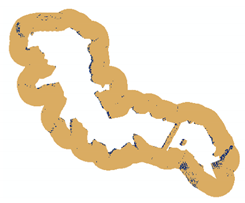 | 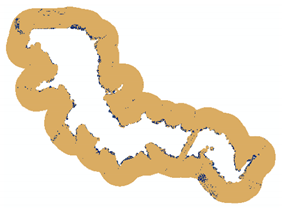 | Blue Springs Reservoir Estimated CTI 1992 = 2.71% 2017 = 3.48% |
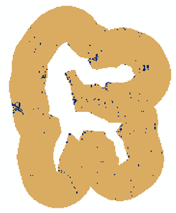 | 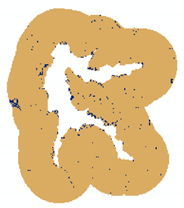 | East Lake Wood Estimated CTI 1992 = 1.41% 2017 = 1.67% |
 | 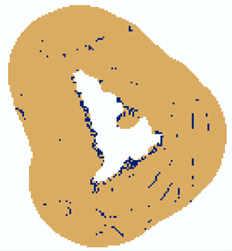 | Heritage Park Lak Estimated CTI 1992 = 3.26% 2017 = 3.10% |
| Compound Topographical Index Estimate | ||
| 1992 | 2017 | Wetland Impact |
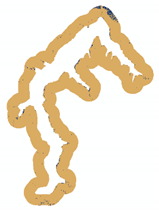 | 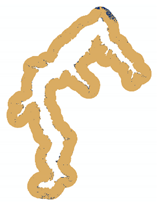 | Lake Jacomo Estimated CTI 1992 = 1.53% 2017 = 1.64% |
 |  | Loch Lloyd Lake Estimated CTI 1992 = 0.78% 2017 = 4.33% |
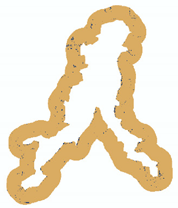 | 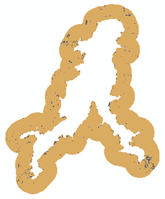 | Longview Lake Estimated CTI 1992 = 1.22% 2017 = 1.42% |
 |  | Lake Tapawingo Estimated CTI 1992 = 1.57% 2017 = 2.03% |
| Compound Topographical Index Estimate | ||
| 1992 | 2017 | Wetland Impact |
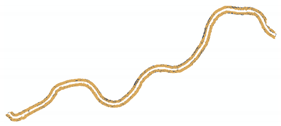 |  | Missouri River Estimated CTI 1992 = 6.55% 2017 = 6.55% |
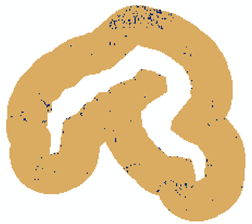 | 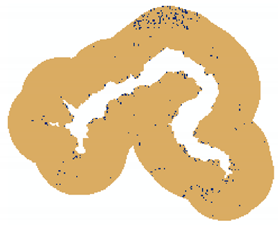 | Prairie Lee Lake Estimated CTI 1992 = 1.16% 2017 = 1.45% |
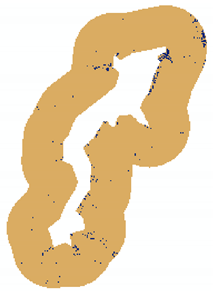 | 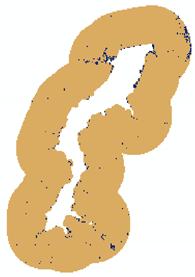 | West Lake Wood Estimated CTI 1992 = 1.24% 2017 = 1.55% |
Appendix B
| Stream Power Index Estimate | ||
| 1992 | 2017 | Wetland Impact |
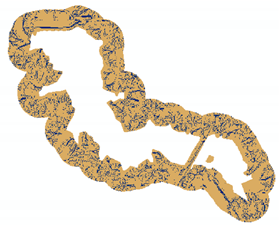 | 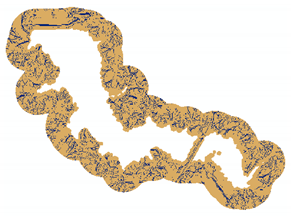 | Blue Springs Reservoir Estimated SPI 1992 = 15.40% 2017 = 14.85% |
 | 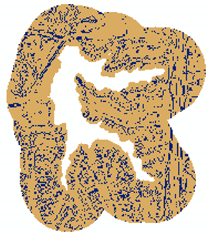 | East Lake Wood Estimated SPI 1992 = 18.33% 2017 = 21.64% |
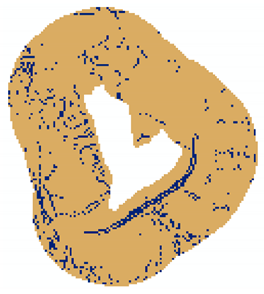 | 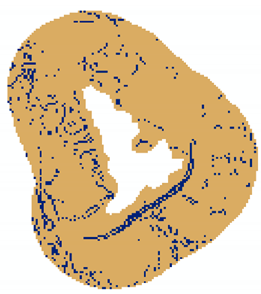 | Heritage Park Lake Estimated SPI 1992 = 8.00% 2017 = 8.01% |
| Stream Power Index Estimate | ||
| 1992 | 2017 | Wetland Impact |
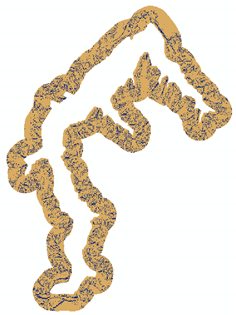 | 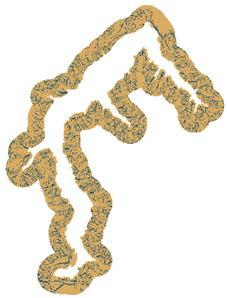 | Lake Jacomo Estimated SPI 1992 = 16.40% 2017 = 19.37% |
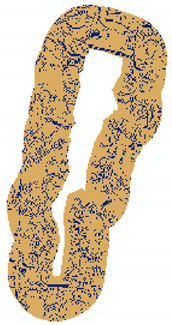 | 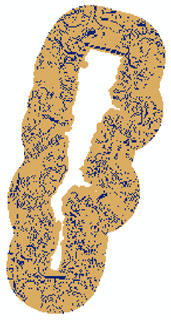 | Loch Lloyd Lake Estimated SPI 1992 = 17.29% 2017 = 17.06% |
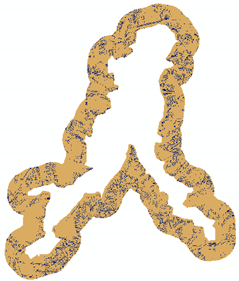 | 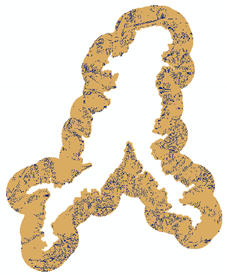 | Longview Lake Estimated SPI 1992 = 12.86% 2017 = 11.52% |
| Stream Power Index Estimate | ||
| 1992 | 2017 | Wetland Impact |
 | 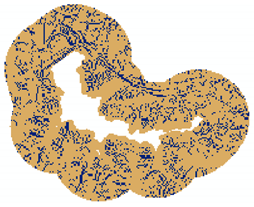 | Lake Tapawingo Estimated SPI 1992 = 21.19% 2017 = 17.25% |
 | 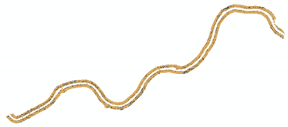 | Missouri River Estimated SPI 1992 = 10.11% 2017 = 9.95% |
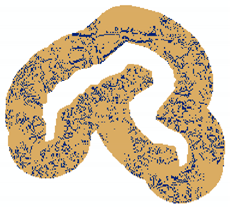 | 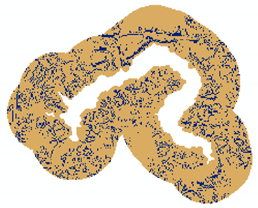 | Prairie Lee Lake Estimated SPI 1992 = 16.01 %2017 = 18.72 |
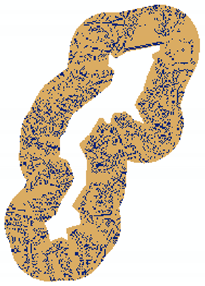 | 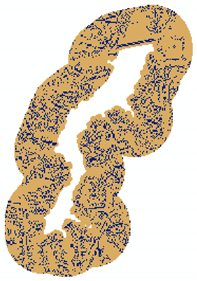 | West Lake Wood Estimated SPI 1992 = 19.51% 2017 = 19.22% |
References
- Ji, W. Remotely-Sensed Urban Wet-Landscapes: An Indicator of Coupled Effects of Human Impact and Climate Change. Int. Arch. Photogramm. Remote. Sens. Spat. Inf. Sci. 2016, 915. [Google Scholar] [CrossRef]
- Dale, V.H.; Brown, S.; Haeuber, R.A.; Hobbs, N.T.; Huntly, N.; Naiman, R.J.; Riebsame, W.E.; Turner, M.G.; Valone, T.J. Ecological principles and guidelines for managing the use of the land. In The Ecological Design and Planning Reader; Island Press: Washington, DC, USA, 2014; pp. 279–298. [Google Scholar]
- Li, H.; Franklin, J.F.; Swanson, F.J.; Spies, T.A. Developing alternative forest cutting patterns: A simulation approach. Landsc. Ecol. 1993, 8, 63–75. [Google Scholar] [CrossRef]
- Harding, J.S.; Benfield, E.F.; Bolstad, P.V.; Helfman, G.S.; Jones, E.B.D. Stream biodiversity: The ghost of land use past. Proc. Natl. Acad. Sci. USA 1998, 95, 14843–14847. [Google Scholar] [CrossRef] [PubMed]
- Wang, X.; Blanchet, F.G.; Koper, N. Measuring habitat fragmentation: An evaluation of landscape pattern metrics. Methods Ecol. Evol. 2014, 5, 634–646. [Google Scholar] [CrossRef]
- Zubair, O.; Ji, W.; Weilert, T. Modeling the impact of urban landscape change on urban wetlands using similarity weighted instance-based machine learning and Markov model. Sustainability 2017, 9, 2223. [Google Scholar] [CrossRef]
- Kelly, M.; Blanchard, S.D.; Kersten, E.; Koy, K. Terrestrial remotely sensed imagery in support of public health: New avenues of research using object-based image analysis. Remote. Sens. 2011, 3, 2321–2345. [Google Scholar] [CrossRef]
- Ji, W.; Ma, J.; Twibell, R.W.; Underhill, K. Characterizing urban sprawl using multi-stage remote sensing images and landscape metrics. Comput. Environ. Urban Syst. 2006, 30, 861–879. [Google Scholar] [CrossRef]
- Weilert, T.; Ji, W.; Zubair, O. Assessing the Impacts of Streamside Ordinance Protection on the Spatial and Temporal Variability in Urban Riparian Vegetation. ISPRS Int. J. Geoinf. 2018, 7, 282. [Google Scholar] [CrossRef]
- McGarigal, K. Introduction to Landscape Ecology. Duke University. 2000. Available online: http://www.umass.edu/landeco/about/landeco.pdf (accessed on 24 December 2019).
- Turner, M.G.; Gardner, R.H.; O’neill, R.V.; O’Neill, R.V. Landscape Ecology in Theory and Practice; Springer: New York, NY, USA, 2001; Volume 401. [Google Scholar]
- Moody, A.; Woodcock, C.E. The influence of scale and the spatial characteristics of landscapes on land-cover mapping using remote sensing. Landsc. Ecol. 1995, 10, 363–379. [Google Scholar] [CrossRef]
- Li, F.; Wang, R.; Hu, D.; Ye, Y.; Yang, W.; Liu, H. Measurement methods and applications for beneficial and detrimental effects of ecological services. Ecol. Indic. 2014, 47, 102–111. [Google Scholar] [CrossRef]
- Turner, M.G.; O’Neill, R.V.; Gardner, R.H.; Milne, B.T. Effects of changing spatial scale on the analysis of landscape pattern. Landsc. Ecol. 1989, 3, 153–162. [Google Scholar] [CrossRef]
- Peña-Barragán, J.M.; Ngugi, M.K.; Plant, R.E.; Six, J. Object-based crop identification using multiple vegetation indices, textural features and crop phenology. Remote. Sens. Environ. 2011, 115, 1301–1316. [Google Scholar] [CrossRef]
- Liu, J.; Linderman, M.; Ouyang, Z.; An, L.; Yang, J.; Zhang, H. Ecological degradation in protected areas: The case of Wolong Nature Reserve for giant pandas. Science 2001, 292, 98–101. [Google Scholar] [CrossRef]
- Semlitsch, R.D. Biological delineation of terrestrial buffer zones for pond-breeding salamanders. Conserv. Biol 1998, 12, 1113–1119. [Google Scholar] [CrossRef]
- Semlitsch, R.D.; Jensen, J.B. Core habitat, not buffer zone. Natl. Wetl. Newsl. 2001, 23, 5–6. [Google Scholar]
- Hartman, G.F.; Scrivener, J.C.E. Impacts of forestry practices on a coastal stream ecosystem, Carnation Creek, British Columbia. Can. Bull. Fish. Aquat. Sci. 1990, 223, 148. [Google Scholar]
- Davies, P.E.; Nelson, M. Relationships between riparian buffer widths and the effects of logging on stream habitat, invertebrate community composition and fish abundance. Mar. Freshw. Res. 1994, 45, 1289–1305. [Google Scholar] [CrossRef]
- Brosofske, K.D.; Chen, J.; Naiman, R.J.; Franklin, J.F. Harvesting effects on microclimatic gradients from small streams to uplands in western Washington. Ecol. Appl. 1997, 7, 1188–1200. [Google Scholar] [CrossRef]
- Weller, D.E.; Jordan, T.E.; Correll, D.L. Heuristic models for material discharge from landscapes with riparian buffers. Ecol. Appl. 1998, 8, 1156–1169. [Google Scholar] [CrossRef]
- Keller, C.M.; Robbins, C.S.; Hatfield, J.S. Avian communities in riparian forests of different widths in Maryland and Delaware. Wetlands 1993, 13, 137–144. [Google Scholar] [CrossRef]
- McComb, W.C.; McGarigal, K.; Anthony, R.G. Small mammal and amphibian abundance in streamside and upslope habitats of mature Douglas-fir stands, western Oregon. Northwest Sci. 1993, 67, 181. [Google Scholar]
- Darveau, M.; Beauchesne, P.; Belanger, L.; Huot, J.; Larue, P. Riparian forest strips as habitat for breeding birds in boreal forest. J. Wildl. Manag. 1995, 59, 67–78. [Google Scholar] [CrossRef]
- Hodges, M.F., Jr.; Krementz, D.G. Neotropical migratory breeding bird communities in riparian forests of different widths along the Altamaha River, Georgia. Wilson Bull. 1996, 108, 496–506. [Google Scholar]
- Semlitsch, R.D. Principles for management of aquatic breeding amphibians. J. Wildl. Manag. 2000, 64, 615–631. [Google Scholar] [CrossRef]
- Bodie, J.R. Stream and riparian management for freshwater turtles. J. Environ. Manag. 2001, 62, 443–455. [Google Scholar] [CrossRef]
- Darveau, M.; Labbé, P.; Beauchesne, P.; Bélanger, L.; Huot, J. The use of riparian forest strips by small mammals in a boreal balsam fir forest. For. Ecol. Manag. 2001, 143, 95–104. [Google Scholar] [CrossRef]
- Spackman, S.C.; Hughes, J.W. Assessment of minimum stream corridor width for biological conservation: Species richness and distribution along mid-order streams in Vermont, USA. Biol. Conserv. 1995, 71, 325–332. [Google Scholar] [CrossRef]
- Cushman, S.A.; McGarigal, K.; Neel, M.C. Parsimony in landscape metrics: Strength, universality and consistency. Ecol. Indic. 2008, 8, 691–703. [Google Scholar] [CrossRef]
- Tomaselli, V.; Tenerelli, P.; Sciandrello, S. Mapping and quantifying habitat fragmentation in small coastal areas: A case study of three protected wetlands in Apulia (Italy). Environ. Monit. Assess. 2012, 184, 693–713. [Google Scholar] [CrossRef]
- McGarigal, K.; Cushman, S.; Regan, C. Quantifying Terrestrial Habitat Loss and Fragmentation. A Protocol. Available online: http://www.umass.edu/landeco/teaching/landscape_ecology/labs/fragprotocol.pdf (accessed on 10 January 2019).
- Saura, S.; Martinez-Millan, J. Sensitivity of landscape pattern metrics to map spatial extent. Photogramm. Eng. Remote. Sens. 2001, 67, 1027–1036. [Google Scholar]
- MARC (Mid-America Regional Council). Census Data for the MARC Region. Available online: https://www.marc.org/Data-Economy/Maps-and-GIS (accessed on 20 November 2019).
- Zubair, O.A.; Ji, W.; Festus, O. Urban Expansion and the Loss of Prairie and Agricultural Lands: A Satellite Remote-Sensing-Based Analysis at a Sub-Watershed Scale. Sustainability 2019, 11, 4673. [Google Scholar] [CrossRef]
- Jensen, J.R. Introductory Digital Image Processing: A Remote Sensing Perspective; Prentice Hall Press: Upper Saddle River, NJ, USA, 2015; pp. 501–548. [Google Scholar]
- Yu, Q.; Gong, P.; Clinton, N.; Biging, G.; Kelly, M.; Schirokauer, D. Object-based detailed vegetation classification with airborne high spatial resolution remote sensing imagery. Photogramm. Eng. Remote. Sens. 2006, 72, 799–811. [Google Scholar] [CrossRef]
- O’Neill, R.V.; Hunsaker, C.T.; Jones, K.B.; Riitters, K.H.; Wickham, J.D.; Schwartz, P.M.; Goodman, I.A.; Jackson, B.L.; Baillargeon, W.S. Monitoring environmental quality at the landscape scale: Using landscape indicators to assess biotic diversity, watershed integrity, and landscape stability. BioScience 1997, 47, 513–519. [Google Scholar] [CrossRef]
- L3 Harris Geospatial Documentation Center. Available online: https://www.harrisgeospatial.com/docs/using_envi_Home.html (accessed on 24 December 2019).
- United State Geological Services (USGS) 3DEP Product Metadata. Available online: https://www.usgs.gov/core-science-systems/ngp/ss/3dep-product-metadata (accessed on 24 December 2019).
- Timm, D. Identifying Critical Source Areas for Best Management Practice Targeting in Impaired Zumbro River Watersheds Using Digital Terrain Analysis. Master’s Thesis, University of Minnesota, Twin Cities, MN, USA, 2016. [Google Scholar]
- Wilson, J.P.; Gallant, J.C. Terrain Analysis: Principles and Applications; Wilson, J.P., Gallant, J.C., Eds.; John Wiley & Sons: New York, NY, USA, 2000. [Google Scholar]
- Murcia, C. Edge effects in fragmented forests: Implications for conservation. Trends Ecol. Evol. 1995, 10, 58–62. [Google Scholar] [CrossRef]
- Semlitsch, R.D.; Bodie, J.R. Biological criteria for buffer zones around wetlands and riparian habitats for amphibians and reptiles. Conserv. Biol. 2003, 17, 1219–1228. [Google Scholar] [CrossRef]
- Lu, D.; Weng, Q. A survey of image classification methods and techniques for improving classification performance. Int. J. Remote. Sens. 2007, 28, 823–870. [Google Scholar] [CrossRef]
- McGarigal, K. Landscape Metrics for Categorical Map Patterns. Lecture Notes. Available online: http://www.umass.edu/landeco/teaching/landscape_ecology/schedule/chapter9_metrics.pdf (accessed on 3 July 2018).
- Hansen, A.J.; Risser, P.G.; di Castri, F. Epilogue: Biodiversity and ecological flows across ecotones. In Landscape Boundaries; Springer: New York, NY, USA, 1992; pp. 423–438. [Google Scholar]
- Temple, S.A. Predicting Impacts of Habitat Fragmentation on Forest Birds: A Comparison of Two Models; Lewis Publishers: New York, NY, USA, 1986. [Google Scholar]
- Öckinger, E.; Schweiger, O.; Crist, T.O.; Debinski, D.M.; Krauss, J.; Kuussaari, M.; Petersen, J.D.; Poyry, J.; Settele, J.; Summerville, K.S.; et al. Life-history traits predict species responses to habitat area and isolation: A cross-continental synthesis. Ecol. Lett. 2010, 13, 969–979. [Google Scholar] [CrossRef]
- Liu, G.; Zhang, L.; Zhang, Q.; Musyimi, Z.; Jiang, Q. Spatio–temporal dynamics of wetland landscape patterns based on remote sensing in Yellow River Delta, China. Wetlands 2014, 34, 787–801. [Google Scholar] [CrossRef]
- Kolozsvary, M.B.; Swihart, R.K. Habitat fragmentation and the distribution of amphibians: Patch and landscape correlates in farmland. Can. J. Zool. 1999, 77, 1288–1299. [Google Scholar] [CrossRef]

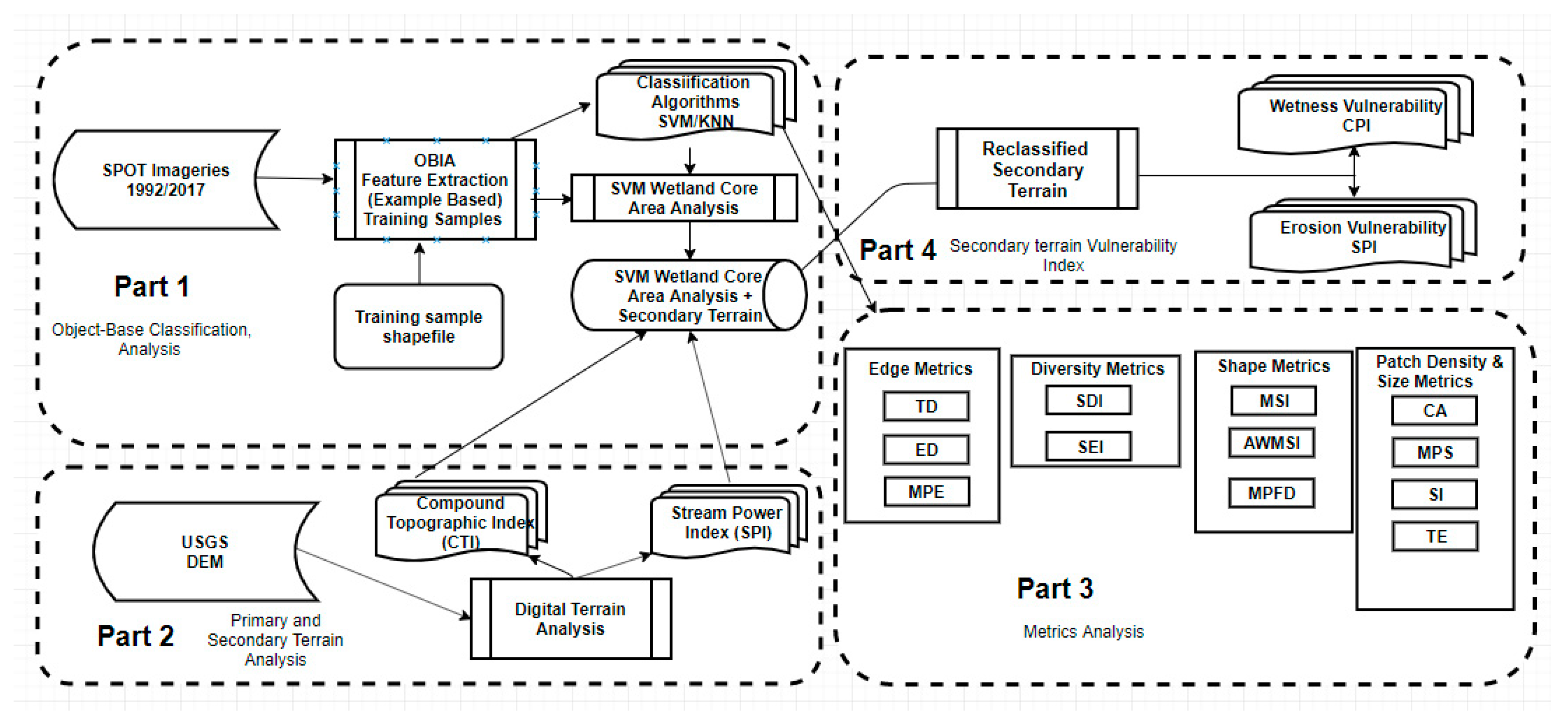
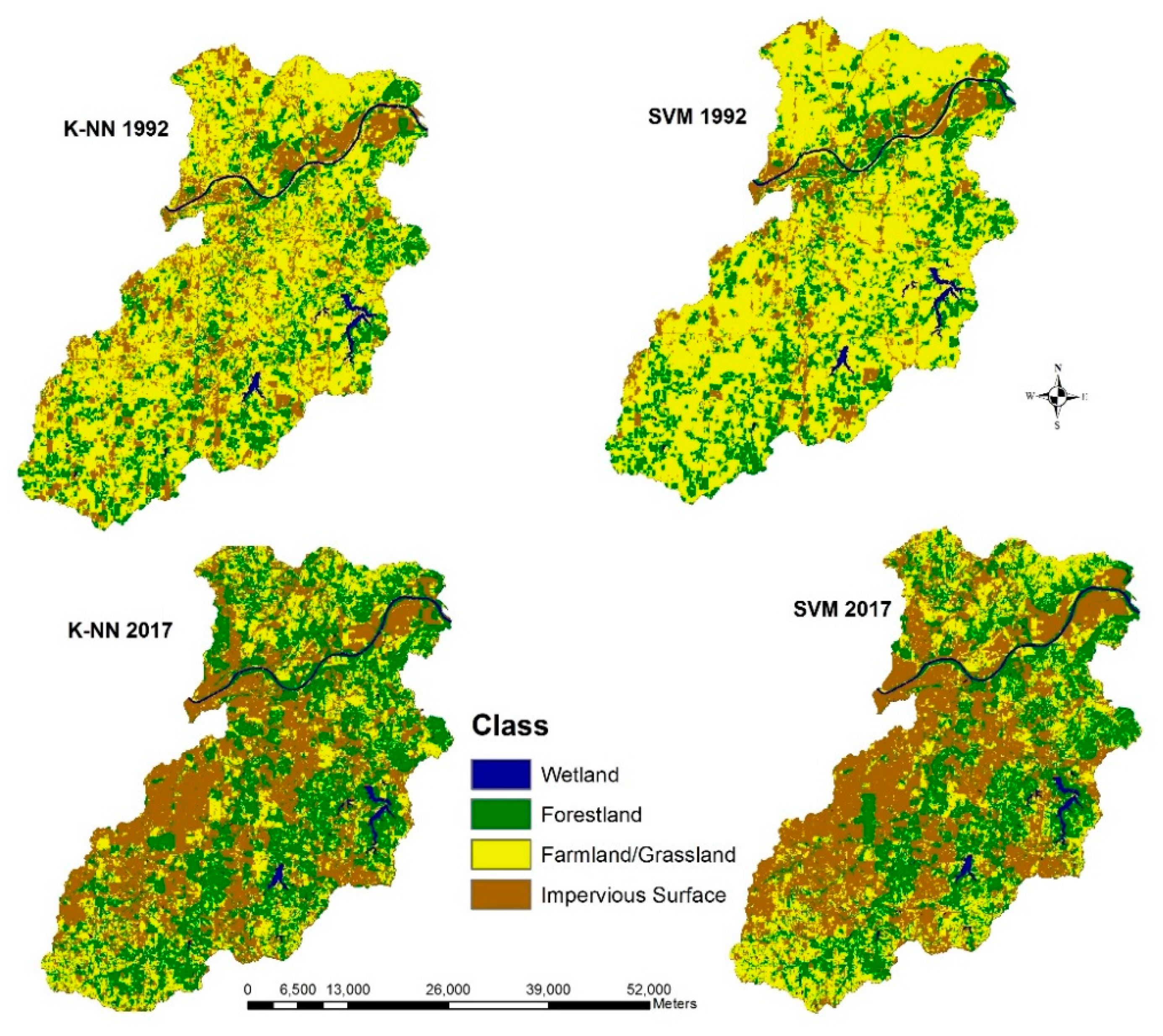
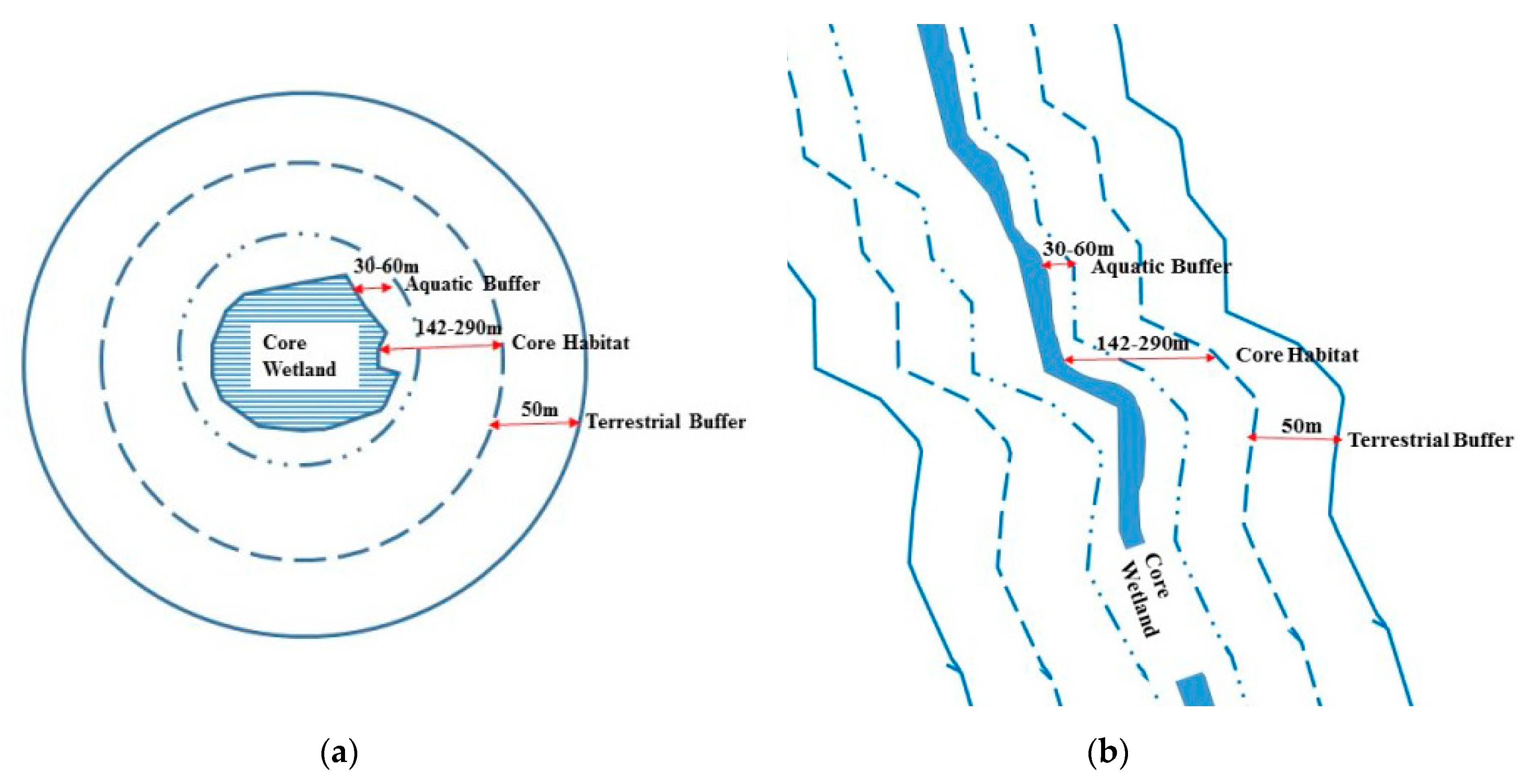

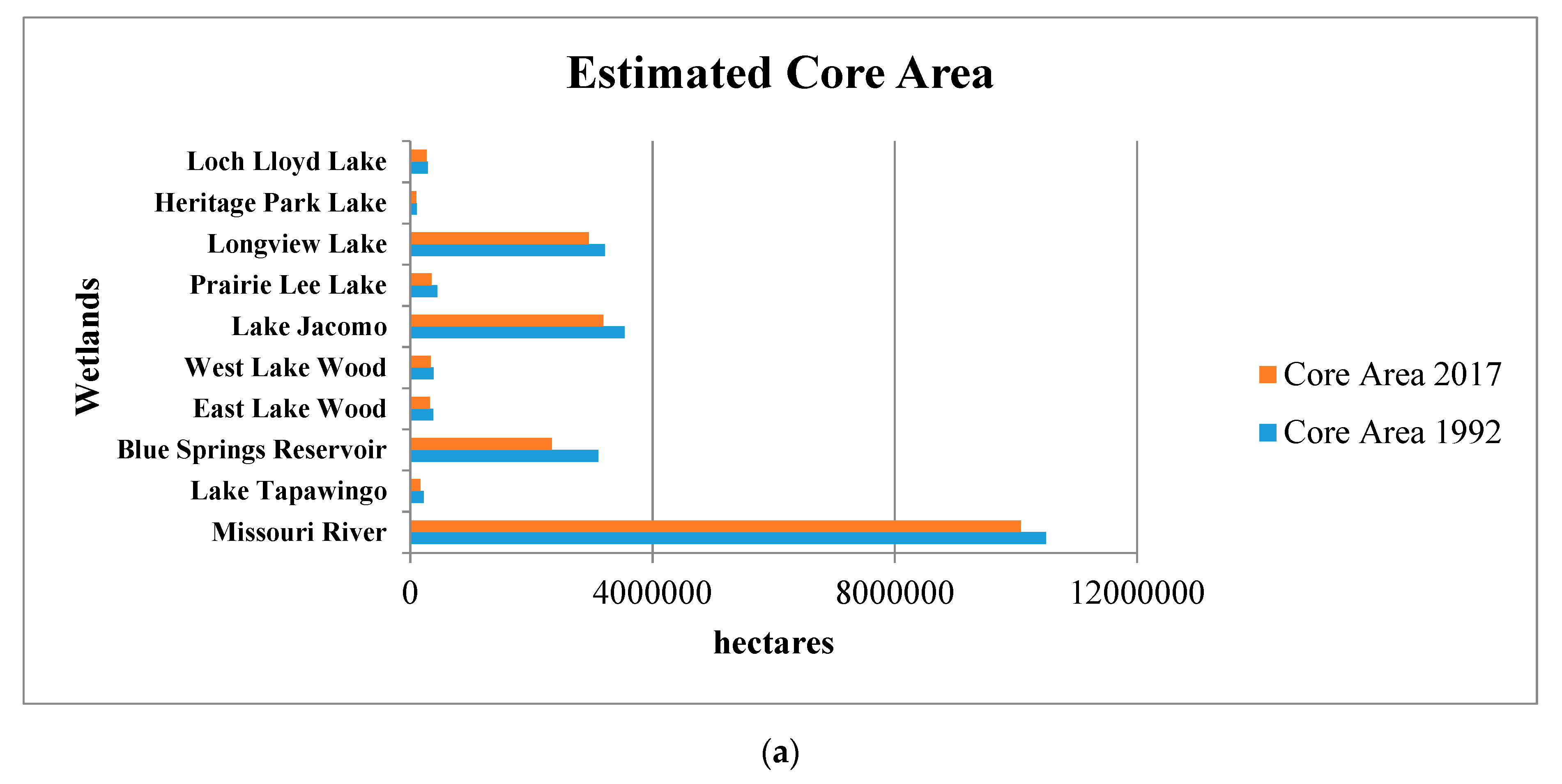
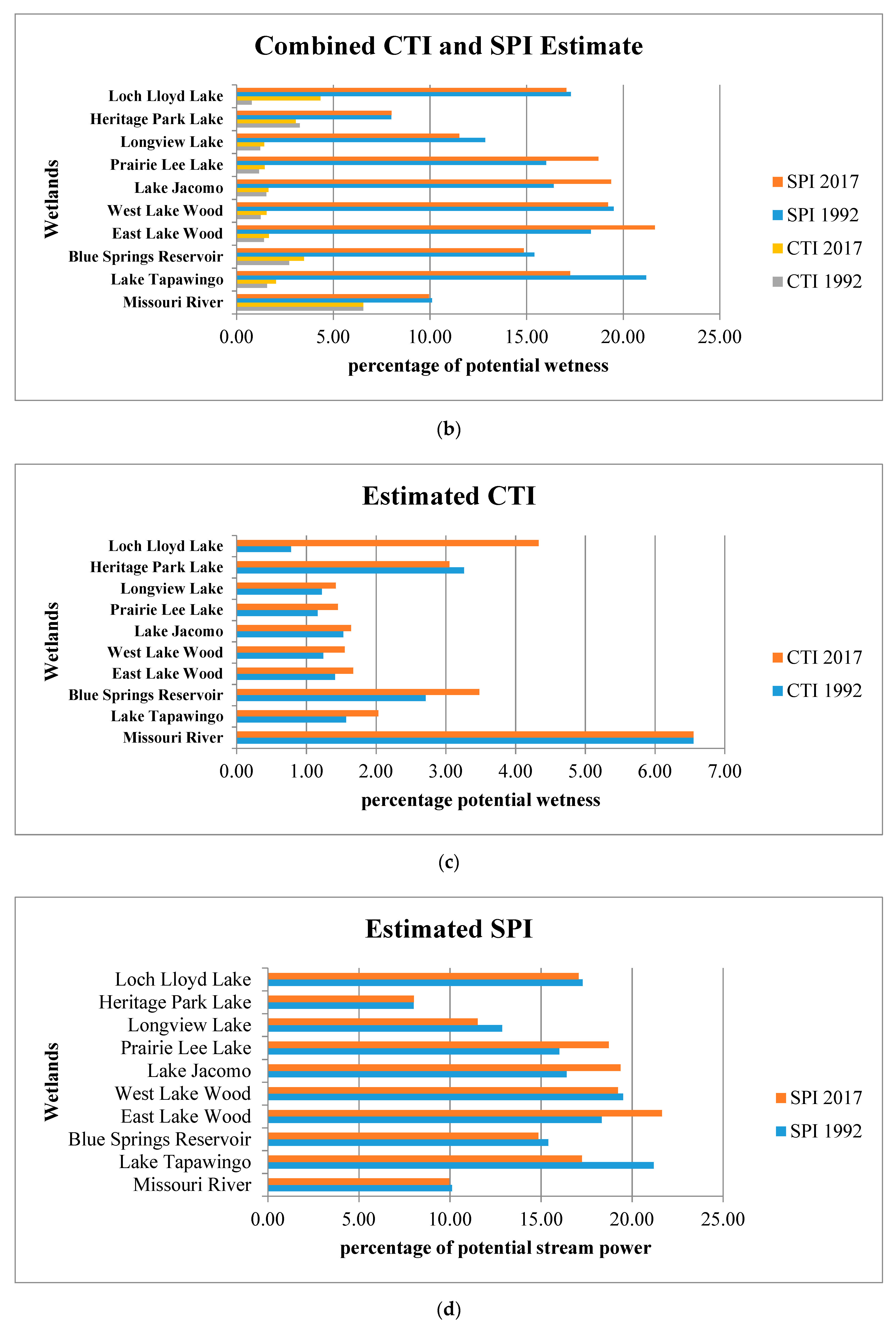
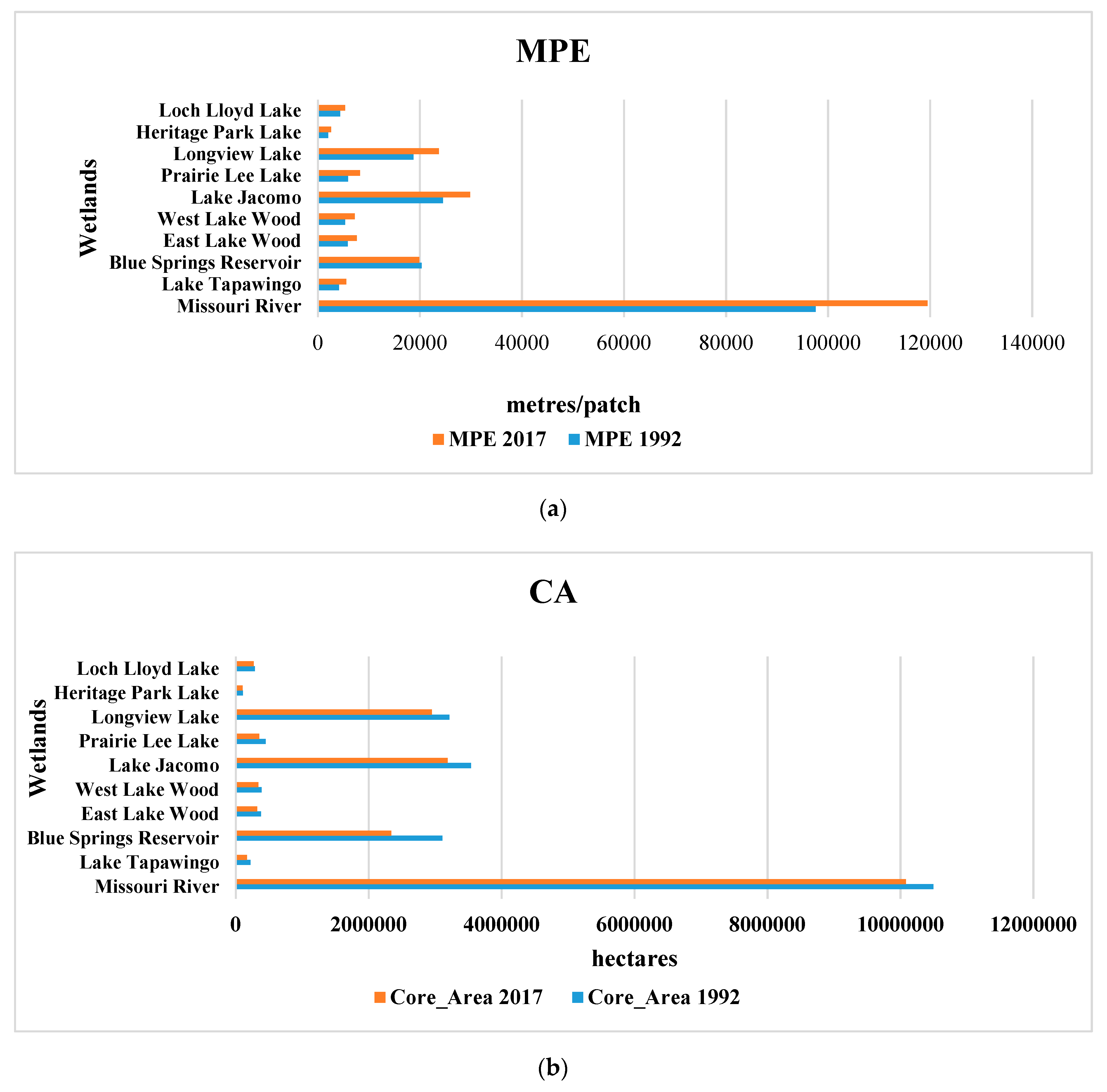
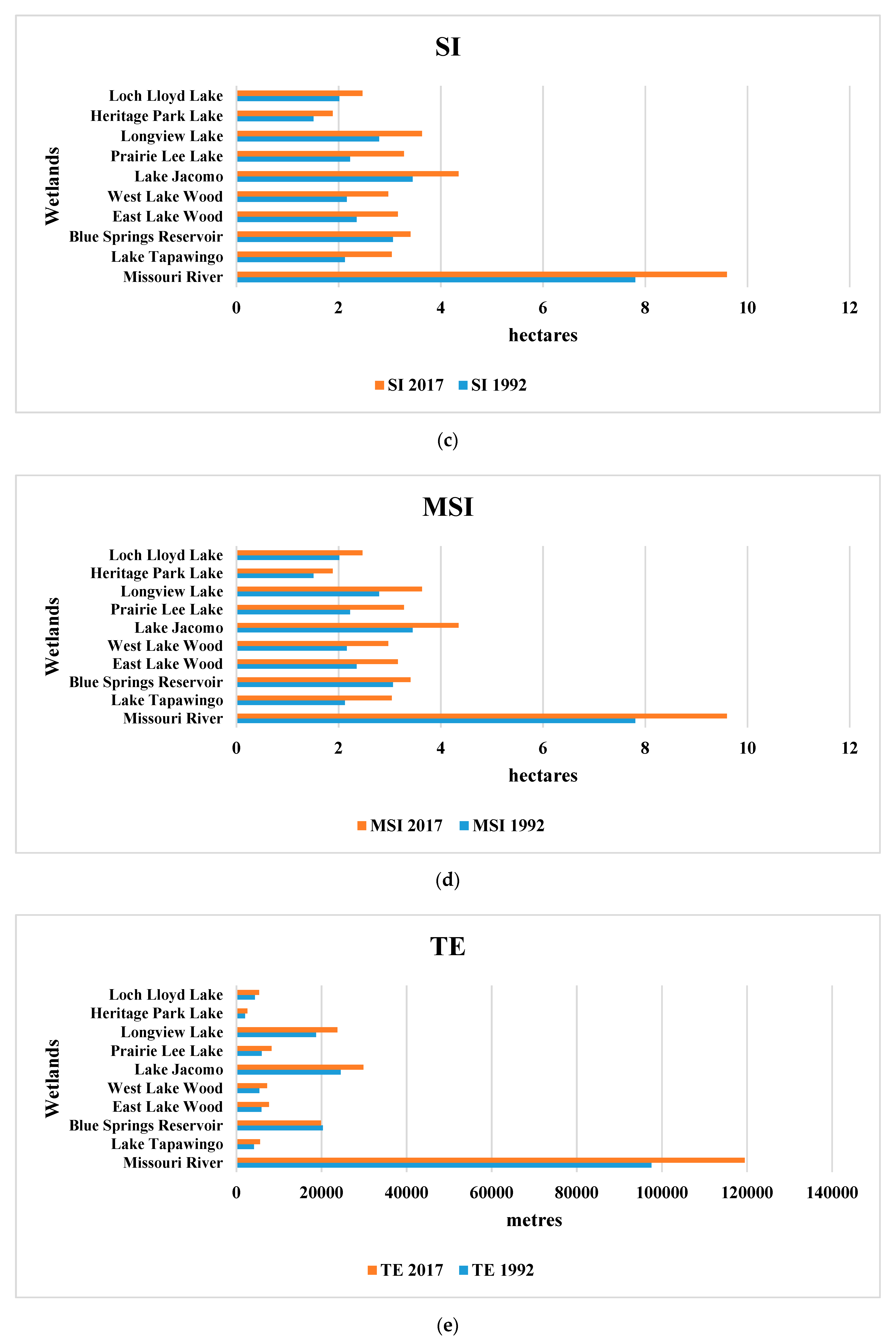
| Class Name Description | Class Name Description |
|---|---|
| Wetlands (WL) | Rivers, lakes, ponds, riparian area, vegetated depressions |
| Farmland/Grassland(FGL) | Cultivated land, grasslands, golf courses, lawns |
| Impervious surfaces (IS) | Built-up areas (buildings, roads, paved walk-ways, etc.) |
| Forestland (FL) | Trees and shrubs |
| Confusion Matrix: Accuracy of Object-Oriented Classification Results | ||||||||
|---|---|---|---|---|---|---|---|---|
| SPOT Image | Supervised Classification Method | Overall Accuracy (%) | Overall Kappa Coefficient | Ground Truth Wetland (%) | Prod. Acc. (%) | User Acc. (%) | Commission (%) | Omission (%) |
| 1992 | SVM | 63.84 | 0.48 | 96.75 | 96.75 | 92.25 | 7.75 | 3.25 |
| K-NN | 61.42 | 0.45 | 96.75 | 96.75 | 93.20 | 6.80 | 3.25 | |
| 2017 | SVM | 89.14 | 0.80 | 95.86 | 97.29 | 94.91 | 6.26 | 4.14 |
| K-NN | 79.54 | 0.65 | 97.29 | 95.86 | 93.74 | 5.09 | 2.71 | |
| Acronym | Name (Units) | Description | Justification |
|---|---|---|---|
| TCAI | Total Core Area Index (ha) | Total core area index is a measure of the amount of core area in the patch or landscape | Fragmentation |
| SI | Shape index (ha) | normalized ratio of patch perimeter to area | Fragmentation |
| CA | Core Area (ha) | The total size of disjunct core patches (hectares). | Fragmentation |
| ED | edge density (m/ha) | Amount of edge relative to the landscape area | Fragmentation |
| TE | Total edge (m) | Perimeter of patches | Fragmentation |
| MPE | Mean Patch Edge (m/patch) | Average amount of edge per patch | Fragmentation |
| MPS | Mean Patch Size (ha) | Mean Patch Size of Patches (Class or Landscape Level) | Fragmentation |
| MSI | Mean Shape Index (ha) | sum of each patch’s perimeter divided by the square root of patch area (in hectares) | Fragmentation |
| AWMSI | Area Weighted Mean Shape Index (ha) | AWMSI equals the sum of each patch’s perimeter, divided by the square root of patch area (in hectares) | Fragmentation |
| MPFD | Mean Patch Fractal Dimension (ha) | Measure shape Complexity | Fragmentation |
| SDI | Shannon’s Diversity Index (ha) | Measure of relative patch diversity | Diversity |
| SEI | Shannon’s Evenness Index (ha) | Measure of patch distribution and abundance | Diversity |
| Initial State | ||||
|---|---|---|---|---|
| Final State | Wetland (%) | Row Total (%) | Class Total (%) | |
| Wetland | 82.18 | 99.91 | 100.00 | |
| Class Total | 100.00 | 100.00 | 100.00 | |
| Class Changes | 17.82 | |||
| Image Difference | 9.17 | |||
| Initial State | ||||
|---|---|---|---|---|
| Final State | Wetland (%) | Row Total (%) | Class Total (%) | |
| Wetland | 79.00 | 99.81 | 100.00 | |
| Class Total | 100.00 | 100.00 | 100.00 | |
| Class Changes | 21.00 | |||
| Image Difference | 8.08 | |||
© 2020 by the authors. Licensee MDPI, Basel, Switzerland. This article is an open access article distributed under the terms and conditions of the Creative Commons Attribution (CC BY) license (http://creativecommons.org/licenses/by/4.0/).
Share and Cite
O. Festus, O.; Ji, W.; Zubair, O.A. Characterizing the Landscape Structure of Urban Wetlands Using Terrain and Landscape Indices. Land 2020, 9, 29. https://doi.org/10.3390/land9010029
O. Festus O, Ji W, Zubair OA. Characterizing the Landscape Structure of Urban Wetlands Using Terrain and Landscape Indices. Land. 2020; 9(1):29. https://doi.org/10.3390/land9010029
Chicago/Turabian StyleO. Festus, Olusola, Wei Ji, and Opeyemi A. Zubair. 2020. "Characterizing the Landscape Structure of Urban Wetlands Using Terrain and Landscape Indices" Land 9, no. 1: 29. https://doi.org/10.3390/land9010029
APA StyleO. Festus, O., Ji, W., & Zubair, O. A. (2020). Characterizing the Landscape Structure of Urban Wetlands Using Terrain and Landscape Indices. Land, 9(1), 29. https://doi.org/10.3390/land9010029




